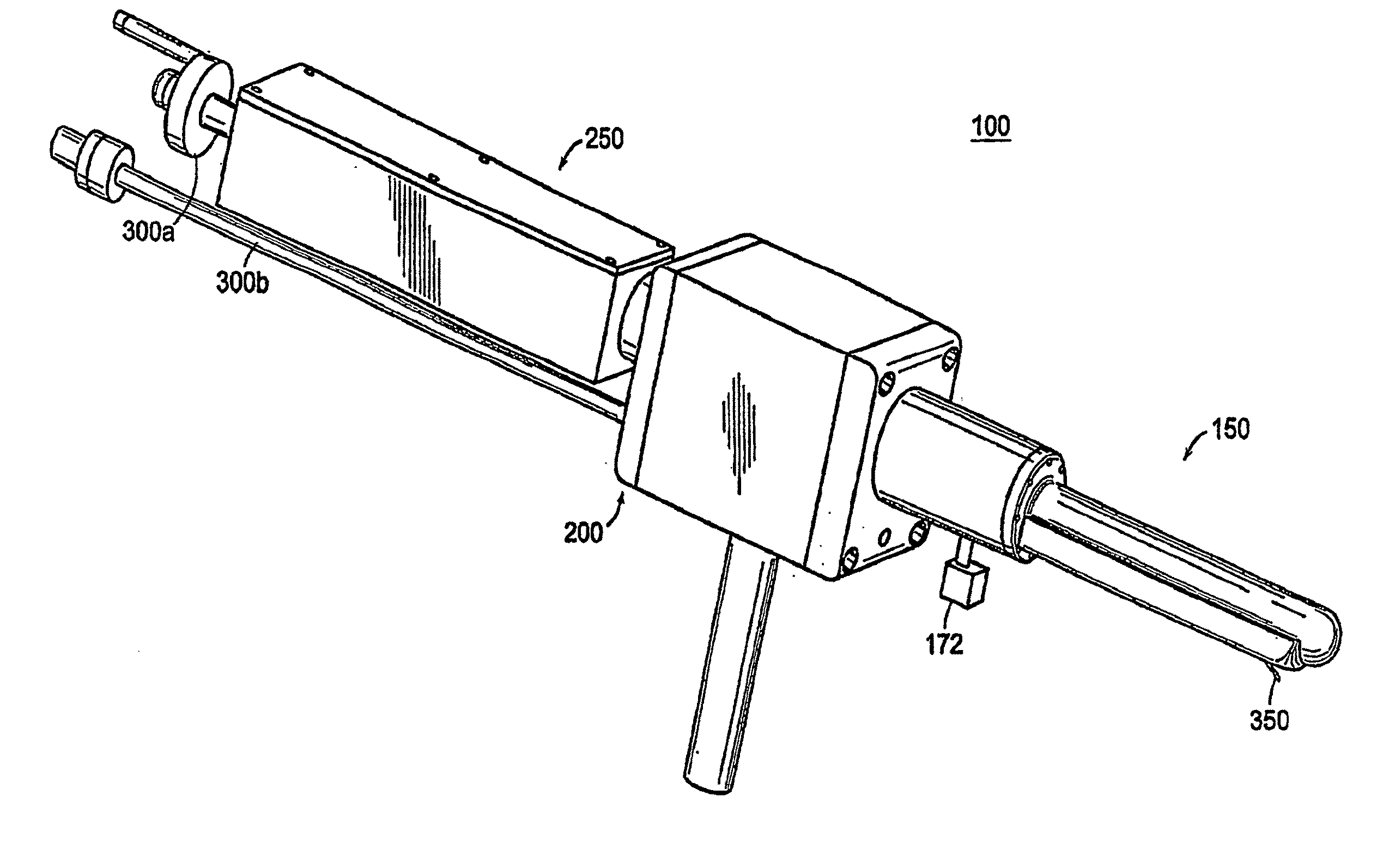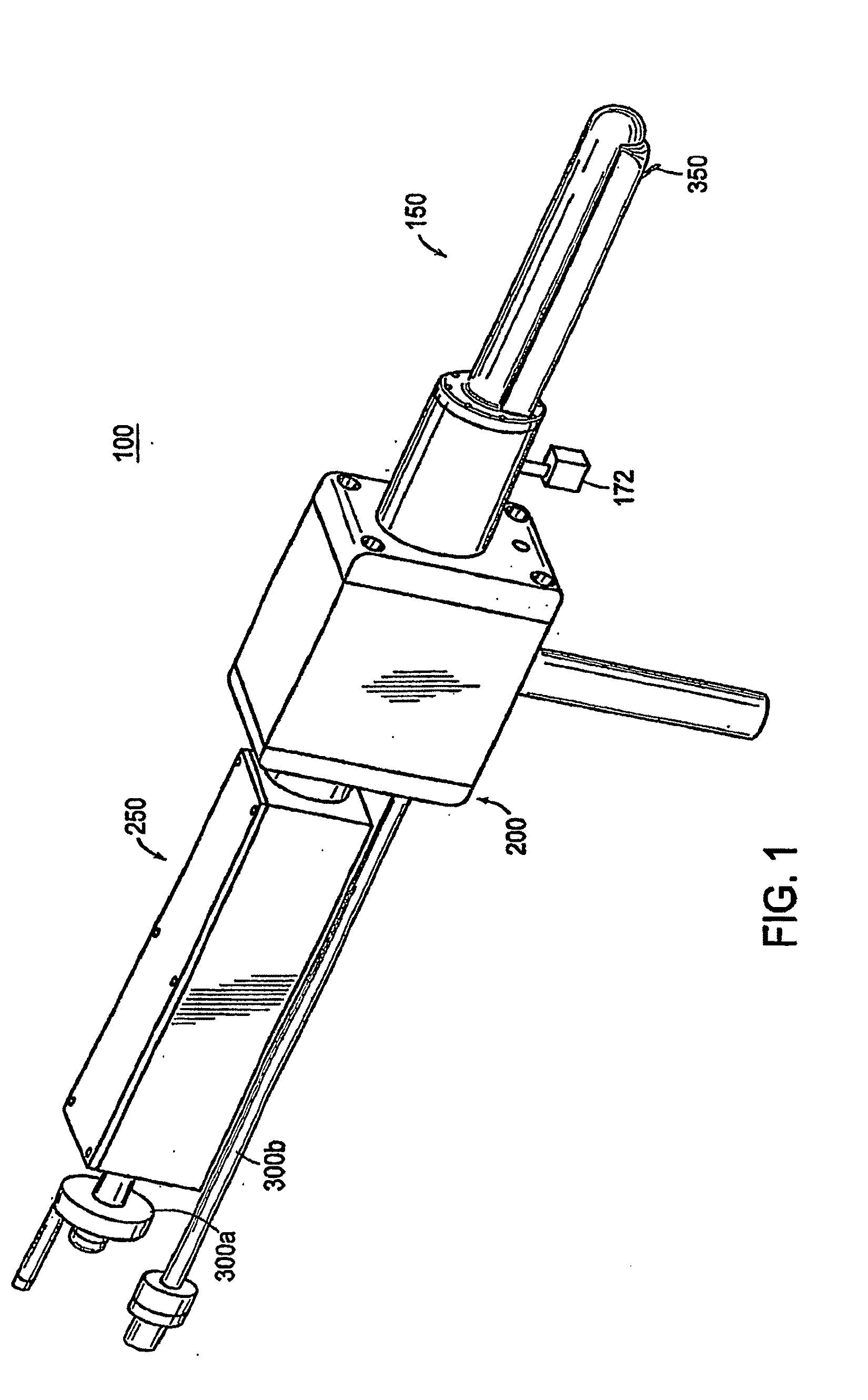Apparatus for insertion of a medical device within a body during a medical imaging process and devices and methods related thereto
a medical device and insertion method technology, applied in the field of medical device insertion devices, can solve the problems of prostate cancer, trus-guided biopsy failing to correctly detect the presence of prostate cancer in approximately 20% of cases, and not being able to target local therapy today
- Summary
- Abstract
- Description
- Claims
- Application Information
AI Technical Summary
Benefits of technology
Problems solved by technology
Method used
Image
Examples
example 2
Experimental Setup
[0233]The accuracy of the passive tracking method for determining the initial device position according to the tracking method of the present invention was tested in a phantom experiment. As shown in FIG. 32, a plate was built with three integrated channels. A channel representing the device axis, a channel for the needle axis at a 40 degree angle (angle α) to the device axis, and a channel perpendicular to the device axis placed 50 mm (distance d) away from the intersection point of the device and needle axis. Passive gadolinium marker tubes (Beekley Corp., Bristol, Conn.), 8 mm in diameter and 15 mm long were positioned along each axis. While two markers were placed in the device and perpendicular channel, the needle channel contained four markers. This setup yielded various combinations of markers with varying distances to define the needle axis. Therefore the effect of the distance between markers on the accuracy could be studied. The experiments were conducted...
PUM
 Login to View More
Login to View More Abstract
Description
Claims
Application Information
 Login to View More
Login to View More - R&D
- Intellectual Property
- Life Sciences
- Materials
- Tech Scout
- Unparalleled Data Quality
- Higher Quality Content
- 60% Fewer Hallucinations
Browse by: Latest US Patents, China's latest patents, Technical Efficacy Thesaurus, Application Domain, Technology Topic, Popular Technical Reports.
© 2025 PatSnap. All rights reserved.Legal|Privacy policy|Modern Slavery Act Transparency Statement|Sitemap|About US| Contact US: help@patsnap.com



